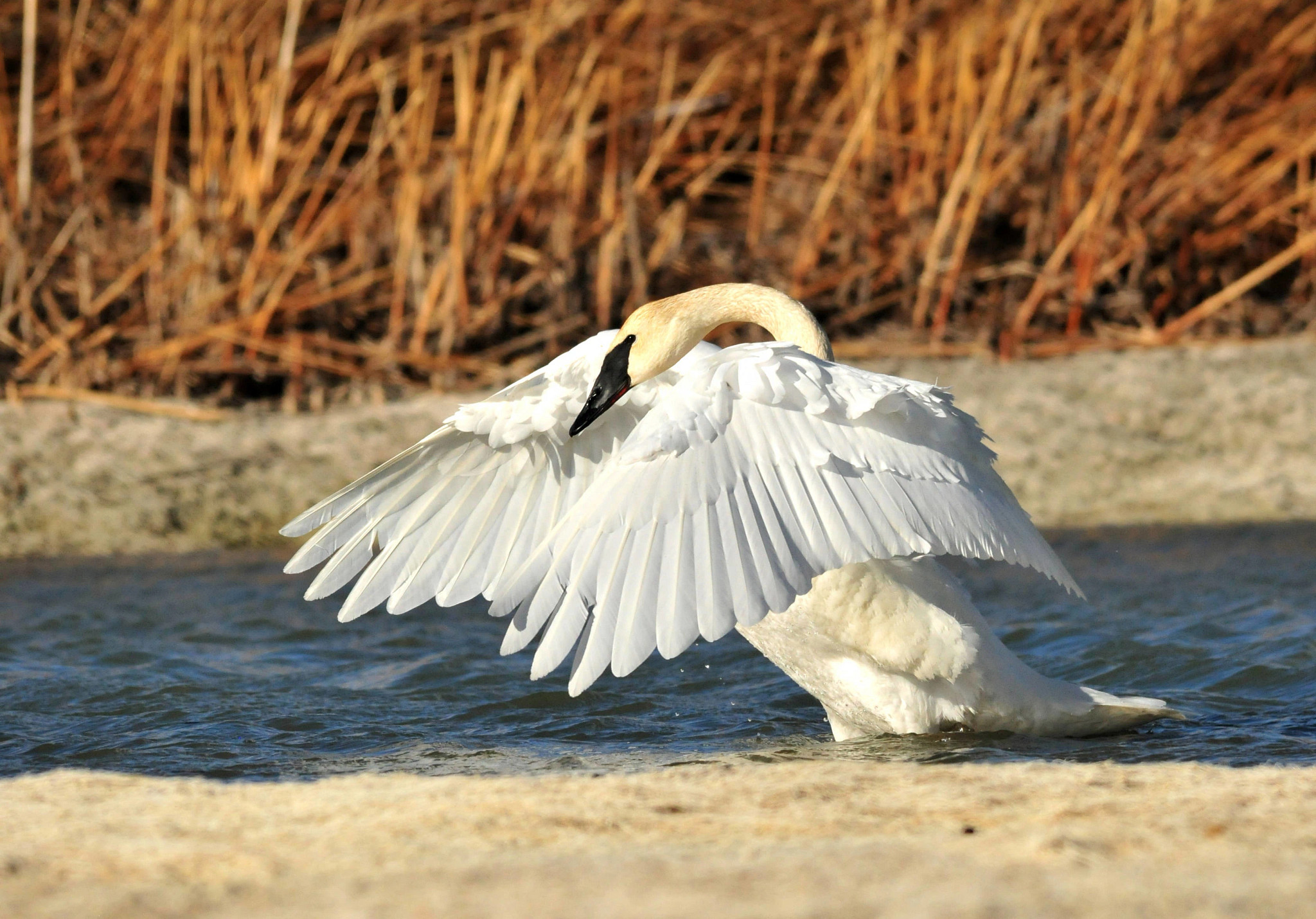Contact: Taylor Finger, DNR Wildlife Biologist
Taylor.Finger@wisconsin.gov or 608-266-8841
Sumner Matteson, DNR Avian Ecologist
Sumner.Matteson@wisconsin.gov or 608-225-0586
Know Your Target: Don’t Accidentally Shoot Swans This Hunting Season
 It is illegal to hunt native trumpeter swans, tundra swans and non-native mute swans. Other large white birds, including American white pelicans and whooping cranes, are also illegal to hunt.
Photo credit: Tom Koerner / USFWS
It is illegal to hunt native trumpeter swans, tundra swans and non-native mute swans. Other large white birds, including American white pelicans and whooping cranes, are also illegal to hunt.
Photo credit: Tom Koerner / USFWS
MADISON, Wis. – The Wisconsin Department of Natural Resources (DNR) reminds hunters to know their target before they shoot and understand the difference between swans and other waterfowl this hunting season.
All Wild Swans Are Protected In Wisconsin
It is illegal to hunt native trumpeter swans, tundra swans and non-native mute swans. Other large white birds, including American white pelicans and whooping cranes, are also illegal to hunt. Shooting a swan may result in a fine and a revocation of all hunting, fishing and trapping privileges.
Waterfowl hunters may encounter various swan species while afield. Swans are more abundant and widespread in Wisconsin than a generation ago and will start migrating through the state over the next few weeks.
The population of the once-endangered trumpeter swan now exceeds 11,000 since their successful reintroduction by the DNR and our partners. Reintroduction efforts started in the late 1980s. The efforts were highlighted in the Wisconsin Natural Resources magazine.

How To Identify A Swan
- Trumpeter swans are North America’s largest native waterfowl species at 4.5 to 5 feet long, weighing between 20 to 30 pounds with a wingspan over 7 feet.
- Tundra swans are slightly smaller and are best distinguished by their high-pitched quavering call, unlike the deep, trumpet-like call of the trumpeter swan.
- Non-native mute swans are similarly sized to both trumpeter and tundra swans but can be distinguished by its orange bill – both native swans have black bills – and prominent black fleshy knob extending from the base of the bill to the forehead.
Snow Geese Are Legal To Hunt
Snow geese are significantly smaller than Wisconsin's swan species. Snow geese are 2 feet long, 5 to 6 pounds and have a wingspan of 4.5 feet. Snow geese also have pink bills and black tips visible on the underside of their wings during flight. Snow geese are infrequent visitors to Wisconsin, while the native swans are much more abundant.
For more information about trumpeter swan identification, photos and tips for how to tell trumpeter swans apart from other large white birds visit the DNR’s Swans in Wisconsin webpage and The Trumpeter Swan Society’s website.

